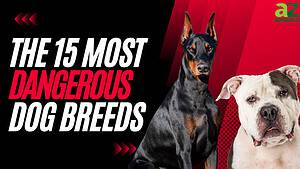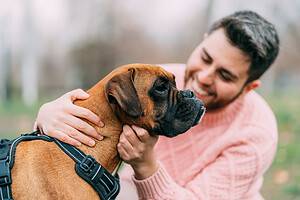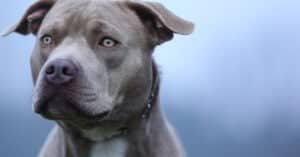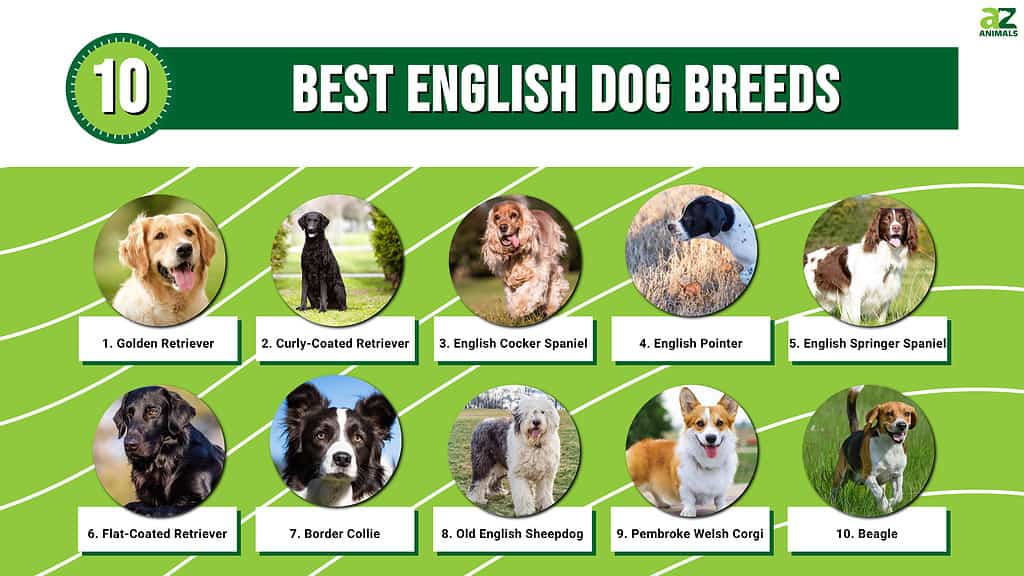
Many dog breeds call England home. Next to Germany, this country has produced more dog breeds than most other areas – and it isn’t a vast country, either. For the most part, the quantity of dog breeds can be attributed to their isolation. A dog from England can’t just walk over to France and breed.
Therefore, many dogs in England began to differ from dogs on the mainland without much human intervention.
Of course, some English dog breeds enjoy more popularity than others. Some of these breeds you’ve easily heard of before. However, others are more obscure and rare, even within England.
1. Golden Retriever
The golden retriever enjoys lots of popularity around the world. They even rank second in the United States in popularity. However, they originate from England as water-retrieving dogs. Simply put, these dogs would paddle out into the water to retrieve ducks and other game.
The breed started as a gun dog for nobility. The first golden retriever was developed by Dudley Marjoribanks, who wanted a gun dog to navigate his very hilly estate. It took him a while to accomplish this task, but he eventually ended up with the golden retriever. This breed likely resulted from crossing a tweed water spaniel, Irish setter, bloodhound, and yellow retriever.
This canine matures slower into adulthood than other dogs. Therefore, they hit puberty later and hold onto their playfulness well into adulthood. They’re best known for their “soft mouths,” which prevent them from damaging ducks while retrieving them. As companion animals, they are extremely adaptable and loving. They love everyone, though they still require socialization like any dog.
Because of their working background, these canines require a lot of exercise. Therefore, they settle best into active families.
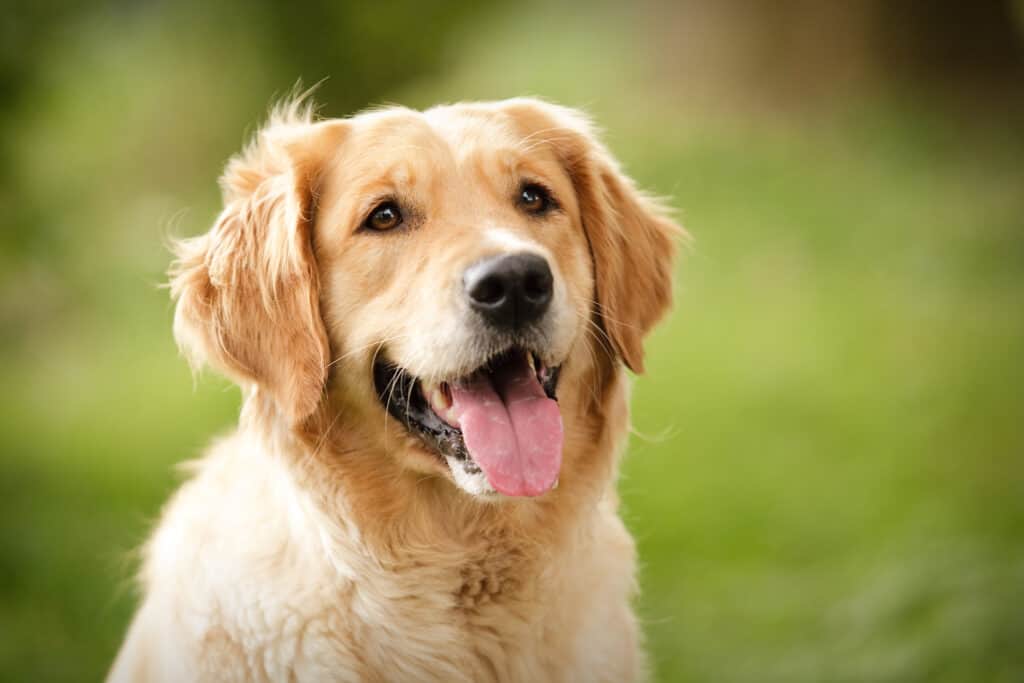
The golden retriever matures slower than other dogs so they hold onto their playfulness well into adulthood.
©Joop Snijder Photography/Shutterstock.com
2. Curly-Coated Retriever
The curly-coated retriever is one of the oldest retrieving dogs. This canine looks like a mix between a golden retriever and a poodle. However, it predates both of these breeds. It is the “original” retrieving dog. They likely descended from the retrieving setter, Irish water spaniel, and English water spaniel.
The curly coat protects them from the elements and water features, including freezing-cold ponds. Given the dog’s job, this feature was essential. They may look a bit prissy, but these canines are some of the more robust dogs around. Usually, they have a black or liver-colored coat, though other colors are technically possible.
While this breed mostly has curly hair, the hair on its face is straight.
Despite being a working dog, the curly-coated retriever has a gentle and affectionate personality. They devote themselves to their family but remain aloof with strangers. They require a lot of socialization to become used to others.
Furthermore, these canines have an independent streak. Training them is more challenging than other dogs, though their intelligence can help.
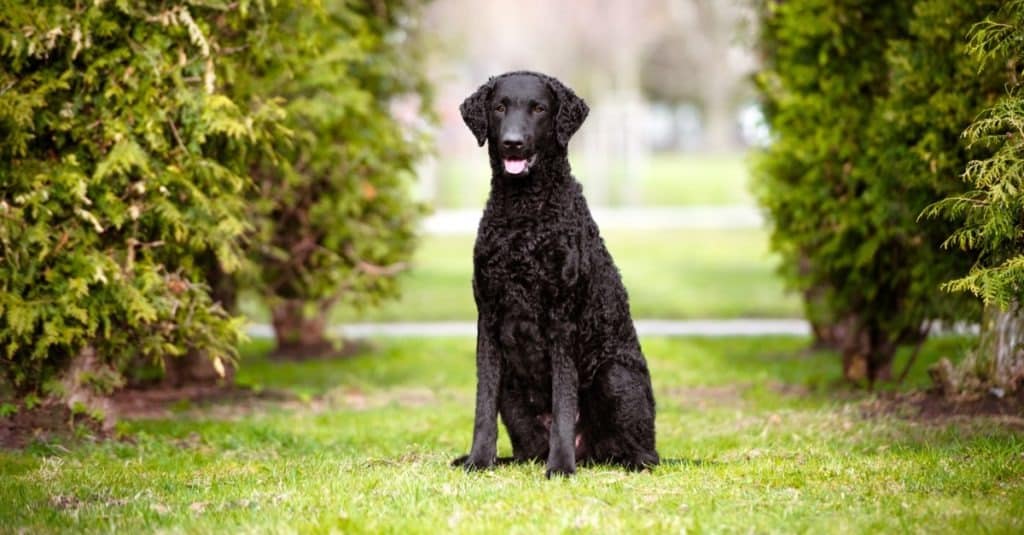
The curly-coated retriever is one of the oldest retrieving dogs and looks like a mix between a golden retriever and a poodle.
©otsphoto/Shutterstock.com
3. English Cocker Spaniel
Out of all the English breeds, the English cocker spaniel is easily one of the most recognizable. This canine enjoys quite a bit of popularity around the world.
While technically English, this breed’s descendants came from Spain. Dog breeders in England brought back several spaniels from the country and created the new English cocker spaniel (hence the word “spaniel”).
Despite being seen as prissy dogs today, this breed was originally a hunting companion. Their role was to flush, point, and retrieve game, making them all-around hunting dogs. Unlike other spaniels, this breed grows relatively tiny, only reaching 15 to 17 inches. Therefore, they mostly flushed smaller game, like woodcocks. This gave them their name – the “cocking spaniel.”
This breed has very long ears that engulf their heads and giant, round eyes. These features only add to their adorableness. While they are often considered toy dogs, their hunting background led to them being very sturdy. Therefore, they tend to be healthy and live long lifespans.
Unlike most hunting dogs, English cocker spaniels don’t require tons of exercise. They do have plenty of energy and require daily walks. However, they tend to be very well-behaved indoors and mellow as they get older.
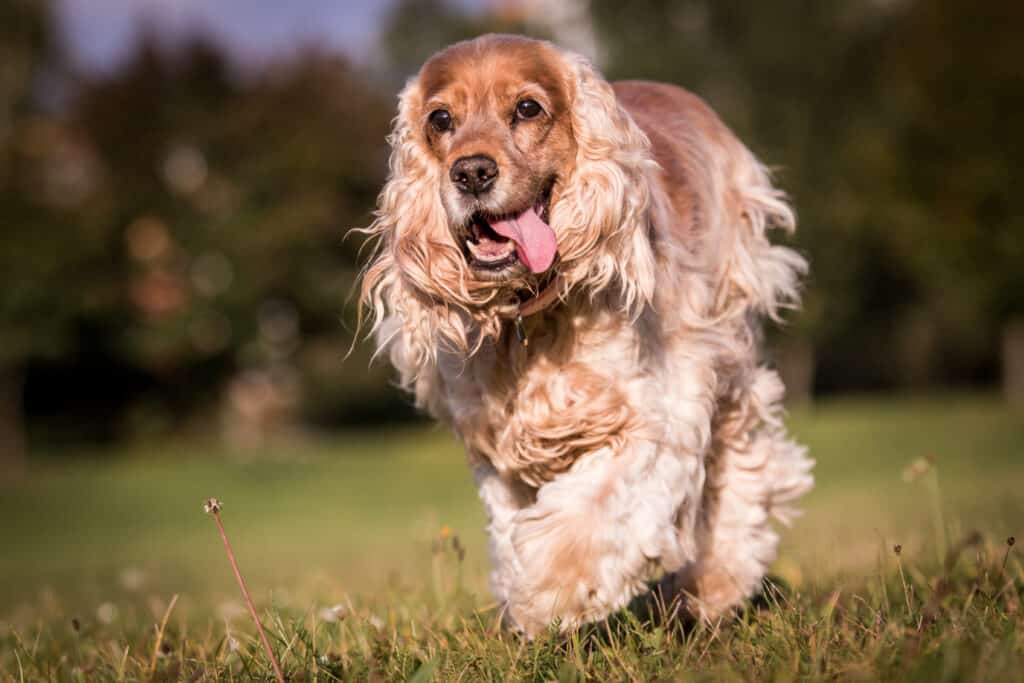
The English cocker spaniel, once a hunting dog, has very long ears that engulf their heads and giant, round eyes.
©Aneta Jungerova/Shutterstock.com
4. English Pointer
As their name suggests, the English pointer “points” to prey, typically birds. They track the prey and locate it before freezing, letting their masters know where they are. However, these dogs may also chase birds down after the shooting starts. They’re retrievers, too.
While these dogs didn’t become extremely popular until the gun was popular, they have existed for several centuries. They pointed out prey when hunters were using bows and arrows. For the most part, the nobility owned them. However, today, they’re owned by many different people.
Despite being an English breed, these dogs likely descend from the Spanish pointer.
These canines remain very capable of hunting, despite their decrease in popularity in recent years. They’re fast and agile. In the home, they are affectionate and even-tempered. Working dogs require a lot of exercise. However, most behave pretty well in a home when their needs are met.
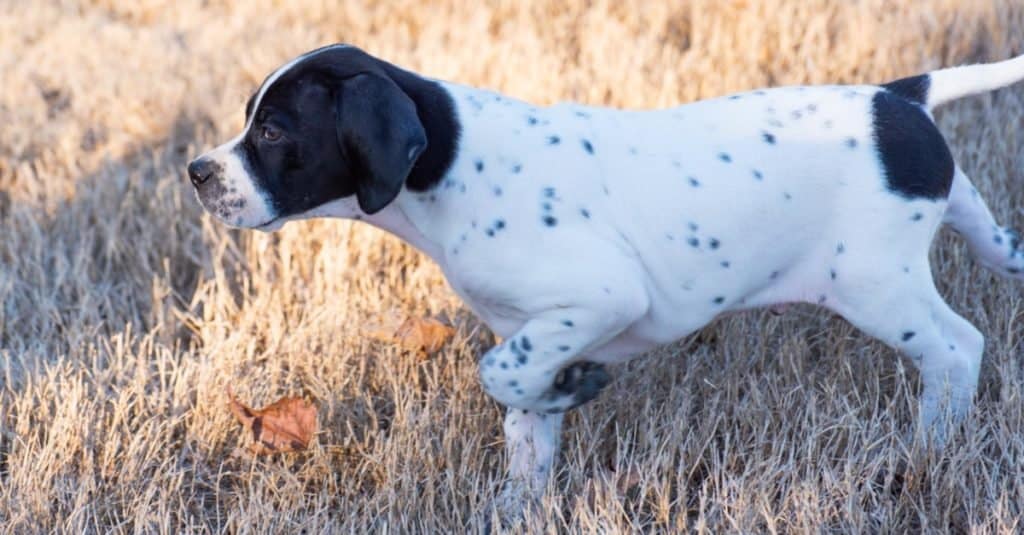
The English pointer would track prey and locate it before freezing, letting their masters know where they are by pointing.
©Nathan Claburn/Shutterstock.com
5. English Springer Spaniel
The English springer spaniel embodies everything a spaniel is supposed to be. They’re hardworking dogs that were bred to flush birds so that hunters could shoot them. These dogs are tough and durable, with a strong working ethic. These traits make them great hunting dogs. However, today, the dog can easily become bored if not mentally stimulated. Therefore, these dogs can be trickier to own.
In the past, spaniels were used as general helpers. Hunters only had nets and bows before the firearm was invented. However, after the invention of guns, the English springer spaniel quickly became a world-class gun dog.
When kept as a companion, these dogs tend to become very people-focused. They prefer to spend as much time with their family as possible. This trait is great if you spend a lot of time at home. However, they are prone to separation anxiety, so they aren’t best for families that are gone for much of the day.
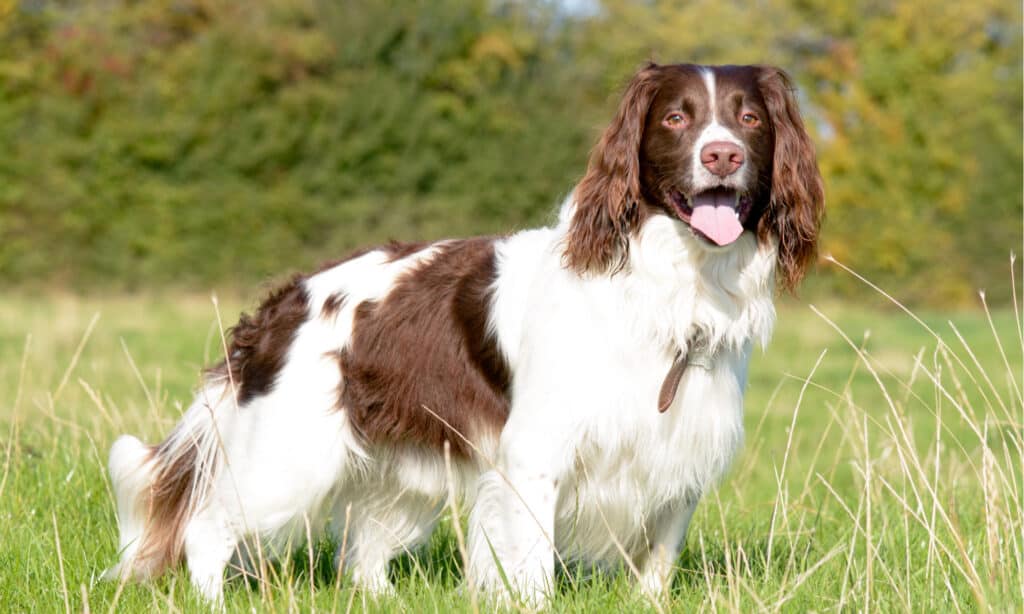
English springer spaniels are hardworking dogs that were bred to flush birds so that hunters could shoot them.
©Martin Christopher Parker/Shutterstock.com
6. Flat-Coated Retriever
The flat-coated retriever is directly related to the curly-coated retriever. As you might have guessed, this dog simply has a straight coat instead of a curly one. However, some other differences exist as well.
Firstly, the flat-coated retriever is much younger. This breed wasn’t developed until the mid-1800s. Several breeds were utilized to create this canine, including the labrador retriever. Shortly after development, this breed exploded in popularity. They became one of the country’s most popular retrieving dogs due to their innate skills.
They’re known for their strong work ethics. However, they are also very affectionate and friendly. Many owners describe them as playful, which probably stems from their slow maturation rate. They’re considered great dogs for families, including those with children.
However, these dogs also require a lot of exercise. Therefore, they aren’t for everyone.
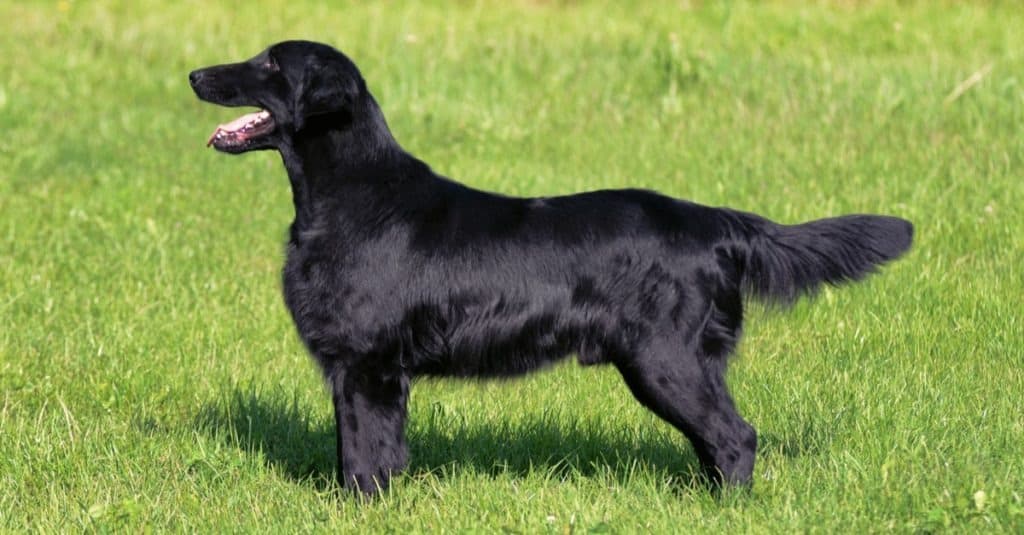
The flat-coated retriever is directly related to the curly-coated retriever but has a straight coat instead of a curly one.
©Ricantimages/Shutterstock.com
7. Border Collie
The border collie can be traced back to the Roman Empire. Back then, armies traveled with herds of animals, which they ate. Herding dogs were required to keep these animals moving with the army and prevent stragglers. Therefore, when the Romans came to Britain, they brought their herding dogs with them – and promptly left them.
Eventually, these herding dogs interbred with the local dogs on the island, as well as dogs brought by other invaders (like the Vikings).
The border collie that we know today came from the border area between Britain and Scotland, hence its name.
These canines are very intense. Their extreme focus serves them well when they are herding, and their extreme endurance allows them to work for hours with no break. Due to their high intelligence, these dogs are one of the most trainable canines in the world.
However, they do have some flaws. Their high intelligence and endurance mean they require lots of exercise and mental stimulation. Border collies are a bit like toddlers – except much larger. You must expect to spend hours meeting your dog’s needs every day before adopting one.
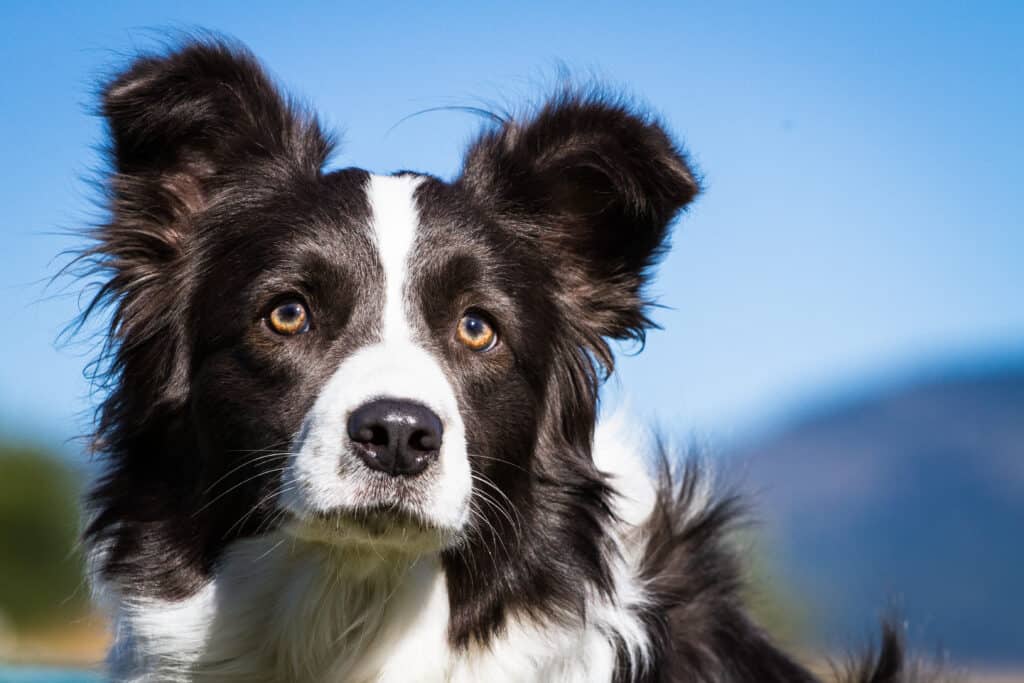
Border collies are highly intelligent herding dogs that require a lot of attention and exercise.
©Lobstrosity/Shutterstock.com
8. Old English Sheepdog
While you may not know what this breed is called, you’ve likely seen one. As their name suggests, this breed was developed for herding sheep. Their rough coat allows them to spend plenty of time outside in the field with their flock. Despite being called “old,” this breed didn’t exist until 1904.
While technically developed in England, this breed contains many non-English dogs in their bloodline. In fact, many experts believe that they’re mostly Russian and Scottish.
Today, these dogs are mostly kept as companion animals. They’re laid-back, easy-going, and agreeable. They tend to be very well-behaved indoors and get along with children well. They take a long time to mature (as many as three years), which means they keep their happy, playful puppy attitude for longer.
However, they can also be very demanding. Their coat requires regular grooming to stay in tip-top condition. They’re also energetic and require lots of exercise, as they were bred to spend all day in the field. Due to their intelligence, Old English sheepdogs also require a significant amount of mental stimulation.
These dogs aren’t for everyone, but they can make great family pets for those with the time to care for them.
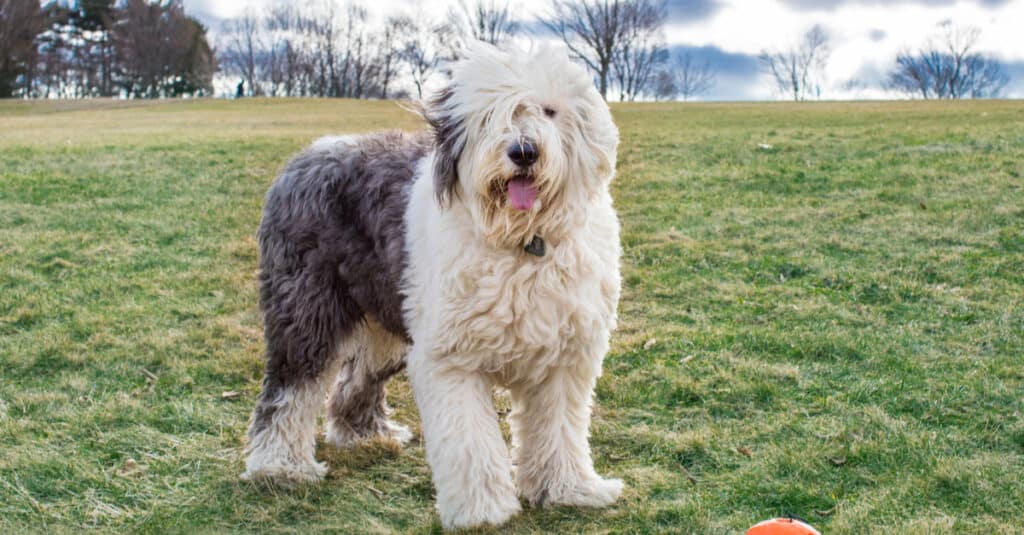
The Old English sheepdog was originally bred to herd but has become more of a companion animal due to their easy-going nature.
©DesignTop/Shutterstock.com
9. Pembroke Welsh Corgi
We can’t write an article about English dogs without mentioning the Pembroke Welsh corgi. These dogs are known for their short, stubby legs and big “bat ears.” While these dogs aren’t super popular, it is hard to find someone in the Western world that doesn’t know about them.
Despite their small stature, these canines were bred for herding. Their smaller size allowed them to dodge dangerous kicks from taller animals, like cattle. They were just the perfect height to bite ankles and get the animals moving, though.
However, these dogs aren’t the most trainable. They are intelligent, but they were bred to work independently. Therefore, they are often stubborn and tend to ignore commands. They often respond well to obedience training – as long as you have treats in your hand. However, just because a corgi responds to a command during training doesn’t mean that it will respond to the same common in the real world.
For one reason or another, these dogs seem to know the difference.
Furthermore, the Pembroke corgi can be pretty loud. They are very alert and tend to be yappy like many smaller dogs. Therefore, they don’t do well in apartments despite their smaller size. They also require a surprising amount of exercise.
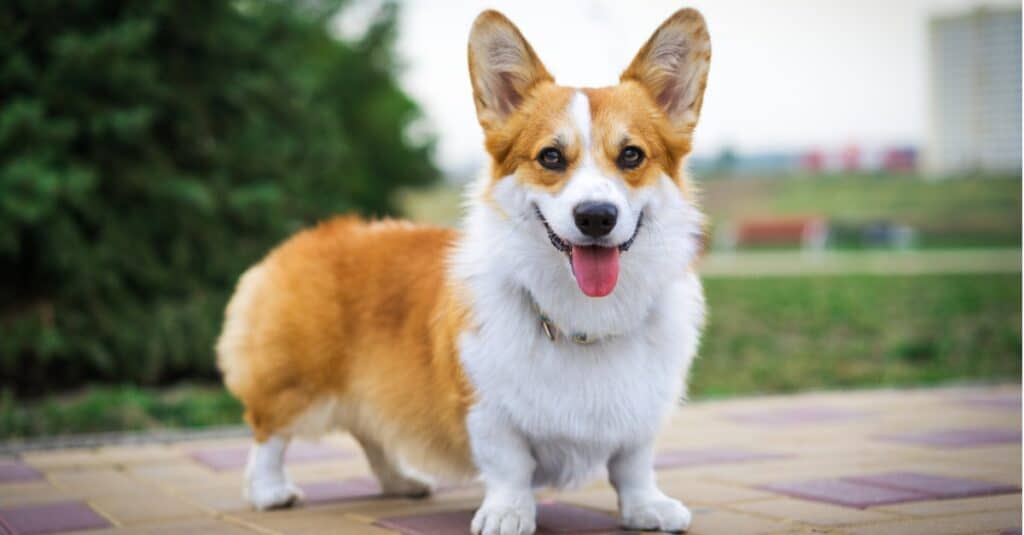
The Pembroke
Welsh corgi
is known for their short, stubby legs, long bodies, and big “bat ears.
©iStock.com/Ирина Мещерякова
10. Beagle
Beagles are driven by their nose (and food). Ancient people bred them to hunt small game thousands of years ago. For the most part, this small game is often rabbits, which beagles are still utilized to hunt today. When it comes to their rabbit-tracking skills, it is hard to outperform a beagle.
Beagles are extremely laidback, and this trait shows in their hunting style. Unlike other dogs, they don’t chase rabbits. Instead, they meander around on the trail of a rabbit, baying loudly so their master (and other dogs) know where they are. Their loud baying makes it practically impossible for them to actually catch a rabbit.
While this may seem counterintuitive, a beagle’s loud bark works as a flushing tool. The hunter predicts where the rabbits will go. (They tend to go in circles between burrows. So, after a few passes, hunters can predict where the rabbit will go next.) Then, the hunter sets up and takes out the rabbit long before the dogs actually get there.
Beagles were bred as hunting dogs, but they also do great in a family setting. They’re very easygoing and put up with a lot. They love people but won’t crowd company. Instead, they tend to sleep around for much of the day. They get along with children, dogs, and even cats.
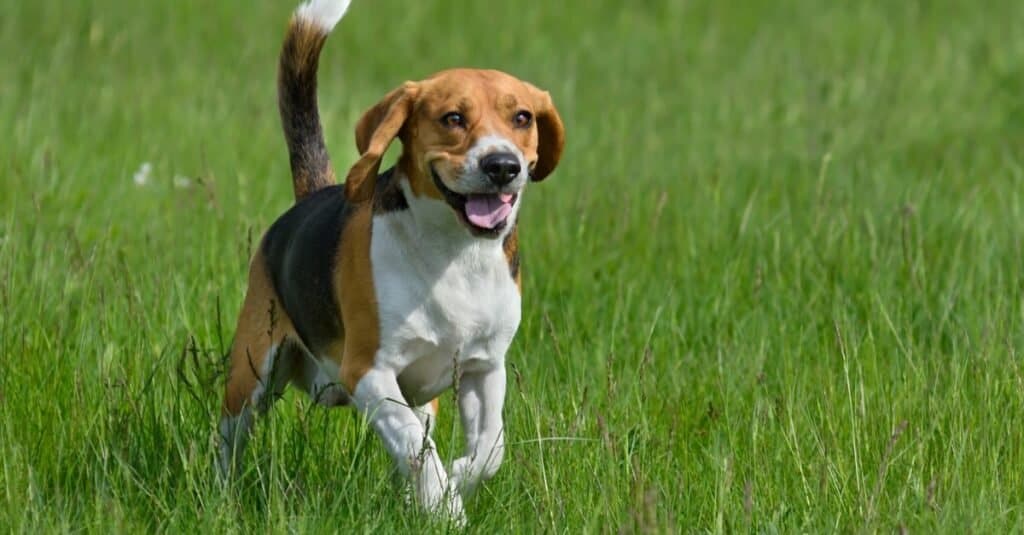
When it comes to their rabbit-tracking skills, it is hard to outperform a beagle.
©eAlisa/Shutterstock.com
Summary of the 10 Best English Dog Breeds
England has bred top dogs for hundreds of years – including the dogs on this list:
| Rank | English Dog Breed |
|---|---|
| 1 | Golden Retriever |
| 2 | Curly-Coated Retriever |
| 3 | English Cocker Spaniel |
| 4 | English Pointer |
| 5 | English Springer Spaniel |
| 6 | Flat-Coated Retriever |
| 7 | Border Collie |
| 8 | Old English Sheepdog |
| 9 | Pembroke Welsh Corgi |
| 10 | Beagle |
The photo featured at the top of this post is © iStock.com/Sven Mewis
Ready to discover the top 10 cutest dog breeds in the entire world?
How about the fastest dogs, the largest dogs and those that are -- quite frankly -- just the kindest dogs on the planet? Each day, AZ Animals sends out lists just like this to our thousands of email subscribers. And the best part? It's FREE. Join today by entering your email below.
Thank you for reading! Have some feedback for us? Contact the AZ Animals editorial team.



